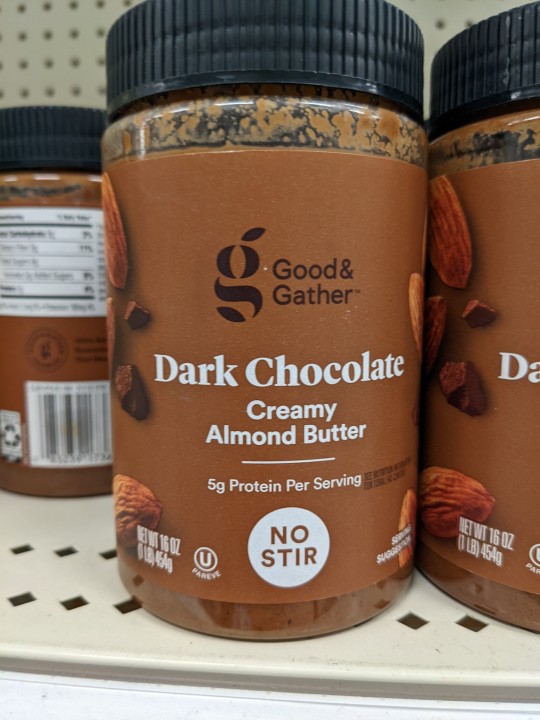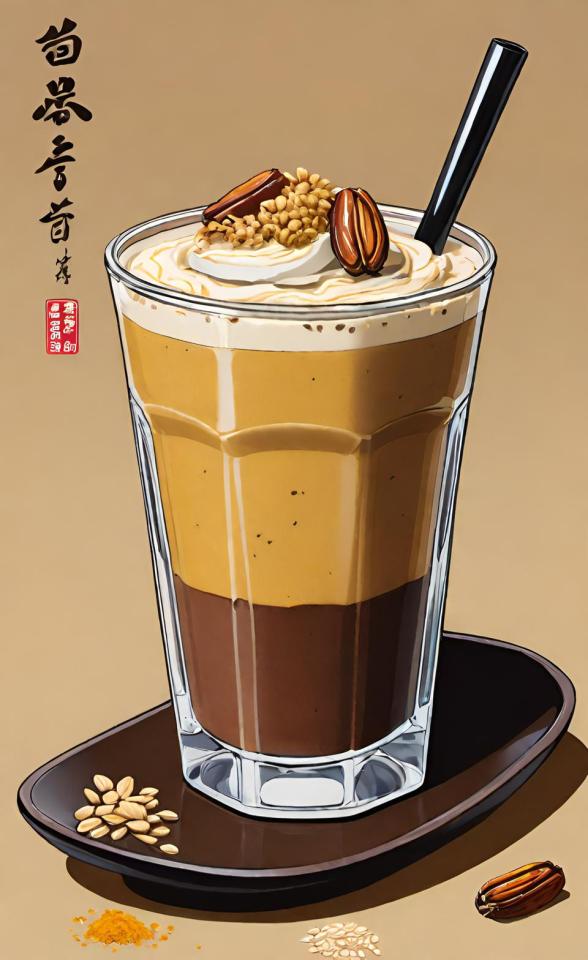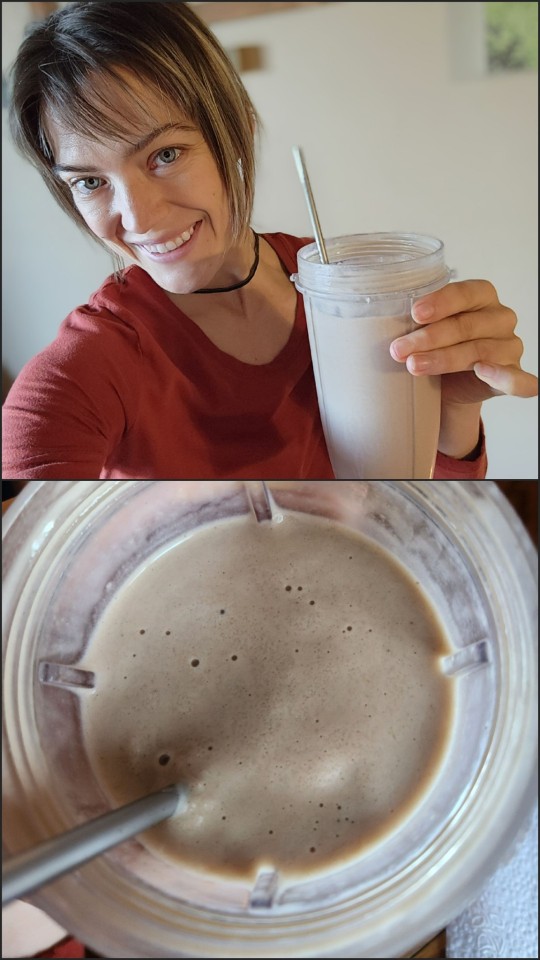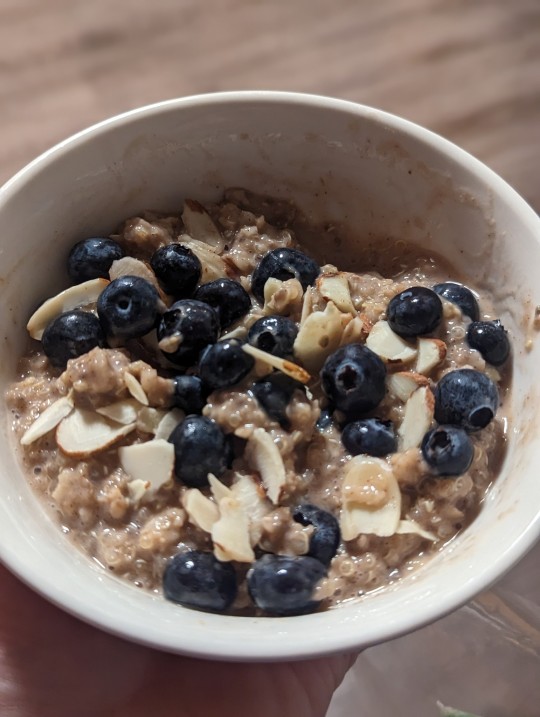#Superfoods
Text

🫑🥑🫛🥦🥬🥝🥒
#beauty#skin care#health#biophilia#biophilia nutrition#self care#health and wellness#wellness#biophilianutrition#nutrition#green blog#green juice#green juice girl#green moodboard#green aesthetic#healthy eating#healthy#healthy living#health and beauty#superfoods#beauty and wellness#wellness tips#wellbeing#health is wealth#healthy lifestyle#healthy food#health and fitness
39 notes
·
View notes
Photo


I am going to do a motherfucking murder.
(Longtime readers of this tumblr are aware of my rage over almonds in dark chocolate; if you’re new here and don’t understand why the bottom image in particular enrages me, here’s the context.)
[ID: Two photos; the top photo, taken in Target, is of their “good and gather” brand almond butter, now in new Dark Chocolate flavor. The bottom photo, taken in Trader Joe’s, shows two new products: milk chocolate covered peanut butter pretzels, and dark chocolate covered almond butter pretzels.]
111 notes
·
View notes
Text
So a Mediterranean diet that targets a mix of food, not a single 'superfood' or a single villainous component of food, works better on a range of health measures than simply a low-fat diet. Eating as many different, complex-tasting delicious plant foods we can, with a small amount of pasture-raised meat if you're that way inclined, is what we are constructed to eat and enjoy.
"Soil: The incredible story of what keeps the earth, and us, healthy" - Matthew Evans
#book quotes#soil#matthew evans#nonfiction#variety#mediterranean diet#superfoods#villainous#health#low fat#diet#variety is the spice of life#complex#pasture#meat#enjoyment
4 notes
·
View notes
Text
Tiramisu Energy Wellness Smoothie

This energizing nutrient-packed smoothie is ideal for individuals with busy schedules who may not have the time to prepare elaborate meals. With its rich nutritional profile, this smoothie serves as a powerhouse beverage, offering approximately 800-900 calories. It's essential to exercise caution when planning your other meals to ensure you stay within your desired calorie intake. Nevertheless, this indulgent yet nutritious treat is a great way to replenish any missed nutrients throughout the day. Pairing it with a 600-700 calorie dinner allows you to maintain your weight loss goals while still enjoying a satisfying meal. You may cut back on the dates and walnuts to trim back on sugars and fats to suit your individual needs. I only added them to enhance the flavor and creaminess of the smoothie.
Tiramisu Energy Wellness Smoothie
1 medium banana
1 small green apple
4 dates without pit
1/4 cup dry oats or 1 cup oat milk
1/2 cup of coffee (cooled)
1 Tbsp Udo Choice Oil 3-6-9
1 Tbsp Goji Berry Powder
1 Tsp Maca
1 Tsp Turmeric or turmeric blend ( cardamom, cinnamon, pepper, turmeric)
3-7 Walnuts
1 Tbsp cocoa powder ( may be cacao blend )
Ice for cup (not to blend with)
* You may also add whipped cream or coconut cream at the top for an authentic tiramisu like treat.
Summary of Benefits:
Energy Boost: The combination of carbohydrates from fruits and oats, caffeine from coffee, and healthy fats from Udo's Choice Oil and walnuts provides a sustainable energy boost.
Nutrient-Rich: This smoothie is packed with essential vitamins, minerals, antioxidants, and fiber from various ingredients, promoting overall health and well-being.
Anti-Inflammatory Properties: Turmeric and other spices in the blend offer anti-inflammatory benefits, aiding in reducing inflammation and promoting joint health.
Brain Health: Omega-3 fatty acids from Udo's Choice Oil and walnuts support brain health and cognitive function.
Digestive Health: High fiber content from fruits, oats, and nuts promotes digestive health and regularity.
Mood Enhancement: Maca powder is believed to improve mood and increase energy levels.
Antioxidant Boost: Goji berry powder and cocoa/cacao powder are rich in antioxidants, protecting cells from damage caused by free radicals.
Expected Feeling After Drinking:
After consuming this smoothie, one can expect to feel energized, mentally alert, and satiated due to its nutrient-dense composition. The caffeine from coffee and the combination of carbohydrates, healthy fats, and protein provide a sustained energy release, helping to stave off fatigue. The anti-inflammatory and antioxidant properties of ingredients like turmeric, goji berry, and cocoa/cacao may also contribute to a sense of well-being and vitality.
Rest Benefits:
While this smoothie is designed primarily for energy and wellness, it can indirectly support good rest by providing a balance of nutrients that promote overall health. For optimal rest, it's essential to consume this smoothie as part of a well-rounded diet and maintain healthy sleep habits. The magnesium content in some ingredients like bananas and oats may also contribute to relaxation and better sleep quality.
Additional Information:
Customization: This smoothie recipe is versatile and can be customized to suit individual taste preferences and dietary restrictions. For example, you can substitute oat milk for dry oats if you prefer a creamier texture or almond milk for a nuttier flavor.
Preparation Tip: To enhance the smoothie's creaminess, consider freezing the banana slices and apple chunks before blending. Additionally, soaking the dates in warm water for a few minutes can help soften them for easier blending.
Portion Control: While this smoothie is nutrient-rich, it's essential to be mindful of portion sizes, especially if you're watching your calorie intake or managing specific health conditions like diabetes.
Sure, let's estimate the totals for some key nutrients based on typical quantities of ingredients used in the smoothie:
Total Carbohydrates: Assuming moderate quantities of ingredients, such as 1 medium banana, 1 small green apple, 4 dates, 1/4 cup dry oats, and 1 Tbsp each of goji berry powder and cocoa powder, the total carbohydrates would likely be around 80-100 grams.
Total Fiber: With the ingredients mentioned above, the total fiber content is estimated to be around 15-20 grams.
Total Sugars: Considering the natural sugars present in fruits and dates, along with any added sugars in cocoa powder or goji berry powder, the total sugars would likely range from 40-60 grams.
Total Vitamin C: Assuming the consumption of 1 medium banana, 1 small green apple, and 1 Tbsp of goji berry powder, the total Vitamin C content could be around 30-40% of the Daily Value (DV).
Total Potassium: With the inclusion of 1 medium banana, 1 small green apple, 4 dates, and possibly some potassium from other ingredients like oats, the total potassium content could be significant, potentially meeting or exceeding 20% of the DV.
Total Vitamin B6: The total Vitamin B6 content could be around 20-30% of the DV, primarily from the banana.
Total Protein: With sources like oats, goji berry powder, and possibly some protein from other ingredients, the total protein content might be around 5-10 grams.
Total Calcium: Depending on the choice between dry oats or oat milk, the total calcium content could vary. If using oat milk, it could contribute around 2-12% of the DV.
Total Iron: Considering sources like goji berry powder and cocoa powder, along with any potential iron from other ingredients, the total iron content might be around 6-12% of the DV.
These estimates are based on typical serving sizes and nutritional composition of the ingredients. Actual values may vary based on specific quantities used and variations in ingredients.
#smoothies#health#healthy#sweets#treats#tiramisu#coffee#maca#goji powder#antioxidant#omegas#superfoods
2 notes
·
View notes
Text

Hello lovelies 🥰
If woman close her eyes, then not only for kiss ☺️🍧when I was driving home from work yesterday, I thought: now nothing like going to the ice cream Palors 🤭 to get a nice and good ice cream
#yummy#yummy recipes#good food#ice cream#mature mom#united states#mommyandme#canada#superfoods#lovelies#ontario#mommylife#ice cream parlor
17 notes
·
View notes
Text
Superfoods in Indian Diet; right from your kitchen
One of the best things about living in India is its food and the culinary heritage that we experience in every meal that we consume. No wonder; back in medieval times, India was the world’s most sought-after country due to its treasure of spices, hidden from the rest of the world. To the present day, the culinary diversity that we find in India cannot be found anywhere else in the world. However, despite having a plethora of food options that are readily and easily available, we often find ourselves purchasing inexpensive, imported alternatives.
There is a long list of food items that are so affordable that they can be found in every Indian household, yet they are inexpensive and often a luxury overseas, such as in the US. The list includes spices such as turmeric, cardamom, and ashwagandha (15x more expensive), grains such as millets and black gram (10x more expensive), and fruits and vegetables such as guava and jackfruit (20x more expensive). Without waiting any further, let’s learn about the Desi superfoods that you can add to your diet based on their affordability and availability.
Everyday Nutritional Powerhouses: Here, we will talk about the superfoods that are not only affordable but also readily available in our households.
Dal (lentils): Packed with some protein, fiber, and many essential minerals, dal is indeed a staple for a reason. You can explore diverse varieties like moong, masoor, tur, urad, and more for different nutritional benefits.
Leafy Greens: Do not try to underestimate the power of palak (spinach), methi (fenugreek), and sarson (mustard greens). Not only are these loaded with vitamins, minerals, and antioxidants, but they also boost your immunity in the chilling winter season.
Seasonal Fruits: Embrace the abundance of papaya, bananas, guavas, and oranges to fuel your body with vitamins and natural sugars.
Spices: We might know them as spices that add flavor to our meals; spices such as turmeric, ginger, garlic, and chili peppers are more than just flavor enhancers. They are anti-inflammatory powerhouses with many health benefits, such as regulating blood pressure and playing a major role in the prevention and treatment of various cancer types.
Yogurt: It is a natural source of probiotics for gut health, calcium for strong bones, and protein for muscle development. It can be consumed plain, flavored, or even with fruits.
Nourishing Yet Special: This category will include superfoods that are not as easily found in households like the ones mentioned above, yet they are hidden gems that carry more nutrients than you can take.
Millets: Ragi (finger millet), bajra (pearl millet), and jowar (sorghum) are some of the gluten-free grains that are rich in protein, fiber, and certain micronutrients. They’re most commonly used in rotis, dosas, or porridge.
Nuts & Seeds: Chia seeds, flaxseeds, and pumpkin seeds are packed with nutrients such as omega-3 fatty acids, essential minerals, and protein. You can soak them in water overnight before consuming them or directly sprinkle the seeds on your salads, yogurt, or porridge.
Amla (Indian Gooseberry): One of our top favorite superfoods, amla is a vitamin C powerhouse that boosts immunity, aids in digestion, and comes with anti-inflammatory properties. You can enjoy it raw, pickled, or in the form of juice.
Coconut: Another superfood like the Indian gooseberry, coconut water is the hub of electrolytes, while its flesh has healthy fats and fiber. While it grows in the south, coconut can be found easily in the northern regions of India. Although it is mostly consumed raw, coconut’s nectar and flesh also make it a key ingredient in various South Indian dishes.
Jackfruit: This versatile vegetable can be enjoyed unripe or ripe. Ripe jackfruit offers antioxidants and vitamins, while unripe jackfruit provides a meaty texture in vegetarian dishes.
Exquisite and Rare Nutritional Delights: Last but not least, this category will take you through some of the rare, expensive superfoods that are worth every penny that you spend on them.
Saffron: Found in the northernmost region of India, i.e., Kashmir, saffron adds a luxurious touch to many dishes and drinks while boasting anti-inflammatory and mood-boosting properties. Due to its scarcity, saffron is one of the most duplicated superfoods. Purchase saffron only from a reliable dealer.
Black Rice: A nutty-flavored rice rich in antioxidants and fiber and known for its longevity-promoting properties.
Ashwagandha: This powerful herb is an adaptogen that helps the body manage stress and improve stamina.
In the big picture, embracing India's diverse superfoods offers a treasure trove of health benefits while remaining kind to your wallet. From readily available lentils and greens to hidden gems like millets and amla, these culinary powerhouses pack a punch of nutrients without the hefty price tag of imported trends. So, explore the vibrant flavors of India, nourish your body with local abundance, and discover that superfoods don't have to be exotic or expensive.
To learn more about health and diet, follow us on https://freshwey.in/blogs/news
5 notes
·
View notes
Link
I recommend checking out a book boxset that includes six books. Save some bucks and boost your health!
#boxset#books#ebooks#gumroad#author#must read#health books#disease prevention#superfoods#science#science books
9 notes
·
View notes
Text

The best consistency with my superfoods.
#beautiful#inspire#health#fitness#personal#inspiration#yoga#fitspo#superfoods#bodi#girlslifting#wellness#life#food#goodisfeul
3 notes
·
View notes
Text
Soon our new Shop will be Online!
Don’t miss the great products and opening Deals!!
Follow us at:
Https://tiktok.com/@mrhealth108
https://youtube.com/@mrhealth108
8 notes
·
View notes
Photo

Summer Musings 2022
iPhoneXR Hipstamatic Photography
Original Photographers
Photographers On Tumblr
Lowy Lens, DC Film, No Flash
#hipstamatic#original photographers#photographers on tumblr#seeing double#blue bowl#superfoods#summer#art#capiolumen#iphone#iphoneXR#iphotography#lowy lens#dc film#no flash
27 notes
·
View notes
Text

Unlocking Nature's Secret: Harnessing the Immunity-Boosting Power of Sea Buckthorn
Unearth the potent immunity-boosting secrets hidden in sea buckthorn. Explore its origins, health benefits, and easy integration into your daily routine."
Discover the potent immunity booster
#wellness#fitness#health#health & fitness#immunity#diseaseresistance#natural immunity#sea buckthorn#naturalremedies#immunity booster#superfoods#health and wellness#antioxidants#immune system#holistichealth
4 notes
·
View notes
Text

Wellness Lifestyle
#wellness#skin care#beauty#nutrition#self care#tea#matcha#matcha tea#matcha latte#latte#green tea#superfood#superfoods#health food#healthy food#health and nutrition#supplements#food#style#dior#luxury living#luxury lifestyle#biophilia#biophilia nutrition#biophilianutrition#fashion#chic#chic style#inspiration#inspo
9 notes
·
View notes
Video
youtube
Top 10 Foods Rich In Iodine
Iodine is an essential mineral that is vital for the proper functioning of the thyroid gland. This gland plays a crucial role in regulating metabolism, growth, and development. The suggested daily amount of iodine intake, also known as the recommended daily intake (RDI), is 150 micrograms per day for the majority of adults. Nevertheless, for women who are expecting or breastfeeding, the necessary amount is greater. While iodine deficiency is rare in many developed countries due to the widespread use of iodized salt, it still affects millions of people worldwide. The deficiency of iodine can lead to thyroid problems, such as goiter, hypothyroidism, and cretinism. Therefore, it is important to consume foods that are rich in iodine to maintain optimal thyroid function.
Here are the top 10 foods rich in iodine.
1. Seaweed
Seaweed is a type of marine algae that is incredibly rich in iodine. In fact, seaweed is one of the most concentrated natural sources of iodine available. It's important to note that not all types of seaweed contain high levels of iodine, so it's best to do some research before adding it to your meals. Some popular varieties include kelp, nori, wakame, and dulse. Seaweed can be enjoyed in salads, soups, sushi rolls, or even as a seasoning on top of roasted vegetables.
2. Shrimp
Shrimp is an excellent source of iodine, providing approximately 35 micrograms of iodine in a 3-ounce serving. For optimal iodine intake, it is recommended to choose fresh or frozen shrimp over canned varieties, as they typically contain higher levels of iodine. In addition to iodine, shrimp is also packed with other essential nutrients such as protein, omega-3 fatty acids, and vitamin B12.
3. Oysters
Oysters, a type of shellfish, are a nutritional powerhouse. They are rich in essential nutrients, particularly iodine. Consuming only six medium-sized oysters can provide you with more than double the recommended daily intake of iodine. Oysters are also rich in protein and omega-3 fatty acids. Additionally, oysters are low in calories, making them a great food choice for those who are trying to lose weight or maintain a healthy diet.
4. Scallops
Scallops are a type of shellfish that are known for their sweet and delicate flavor. They are also a great source of iodine. A 3-ounce serving of scallops contains approximately 35 micrograms of iodine, which is more than 20% of the recommended daily intake. Moreover, They're also a great source of protein and low in fat. You can enjoy them grilled, sautéed, or even raw in sushi.
5. Tuna
Tuna is an exceptional source of iodine, providing a wealth of health benefits. A 3-ounce serving of canned tuna contains approximately 17 micrograms of iodine, which is about 11% of the recommended daily intake. Additionally, tuna is also a great source of protein, omega-3 fatty acids, and other nutrients that are important for overall health. You can enjoy tuna in a salad, sandwich, or even as sushi.
6. Cod
Cod is a popular white fish that is also rich in iodine. A 3-ounce serving of cod contains approximately 99 micrograms of iodine, which is more than 65% of the recommended daily intake. Moreover, it also provides other important nutrients such as omega-3 fatty acids, vitamin D, and selenium.
7. Squid
Squid is an excellent source of iodine. Just 3 ounces of cooked squid contain approximately 720 micrograms of iodine, which is more than four times the recommended daily intake. Squid is also rich in other nutrients like vitamins B12 and D, as well as omega-3 fatty acids. You can enjoy squid in various ways such as grilled, stir-fried, or even deep-fried as calamari rings.
8. Crab
Crab is another seafood that is high in iodine. A 3-ounce serving of crab contains about 90 micrograms of iodine, which is nearly 60% of the recommended daily intake. Additionally, crab is a low-fat and high-protein food that provides several other important nutrients, like vitamin B12, selenium, and omega-3 fatty acids. Not only does it taste great on its own, but it can be added to a variety of dishes like salads or soups.
9. Eggs
Eggs are a great source of iodine, with one large egg containing approximately 24 micrograms of iodine, which is about 16% of the daily recommended intake, making them a great choice whether you're enjoying them as part of a breakfast spread or adding them to salads, sandwiches, or stir-fries.
10. Dairy
Dairy products such as milk, cheese, and yogurt are excellent sources of iodine. This is because cows are typically fed iodine-rich feed, and their milk contains high levels of this nutrient. Just one cup of milk can provide up to 56 micrograms of iodine, making it one of the easiest ways to meet your daily needs. Other dairy products like cheese and yogurt also contain significant amounts of iodine. However, remember to choose low-fat options to avoid excess saturated fat consumption. In addition, cheese and yogurt are fermented, which can increase the bioavailability of iodine. Dairy products are not only a great source of iodine but also provide other important nutrients such as calcium, protein, and vitamin D. However, people who are lactose intolerant or have milk allergies should look for other sources of iodine.
#youtube#iodine#thyroid#thyroidfood#food#foods#diet#healthyfood#healthyfoods#superfood#superfoods#thyroidgland#squid#goiter#hypothyroidism#hypothyroid
5 notes
·
View notes
Text
Blueberries, known as "brain berries," are rich in antioxidants like anthocyanins, which improve brain function, memory, and cognition. They are also packed with vitamins C and K and fiber, making them a nutritious choice for brain health.
#mentalhealth #cognitivefunction #brainhealth #healthfood #superfoods
2 notes
·
View notes
Text

Superfood quinoa porridge: oats, quinoa, almond milk, cinnamon, flaxseed, sliced almonds, and fresh blueberries
#my food#breakfast bowl#breakfast#healthy food#healthy eating#healthy breakfast#clean eating#superfoods#breakfast food
5 notes
·
View notes
